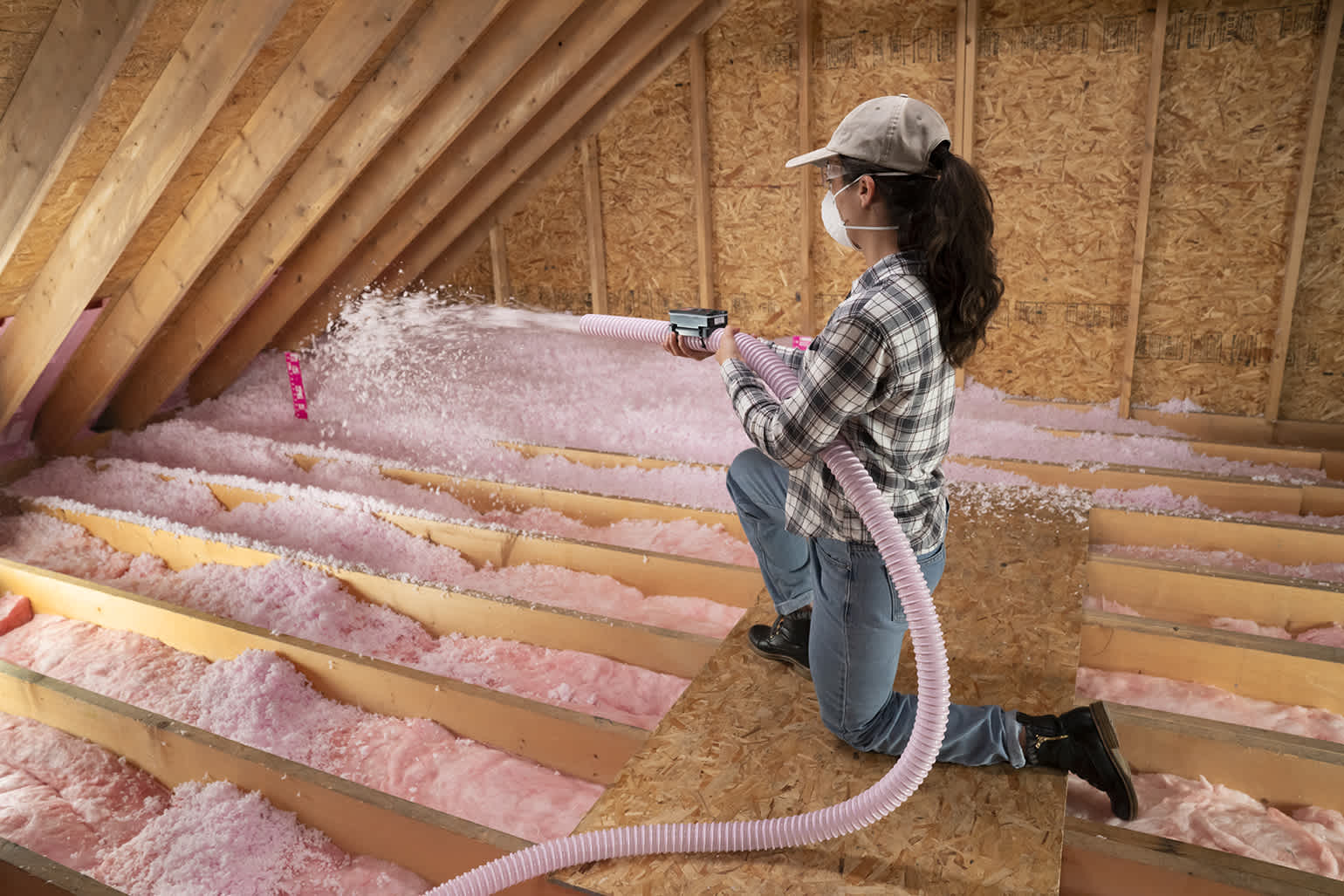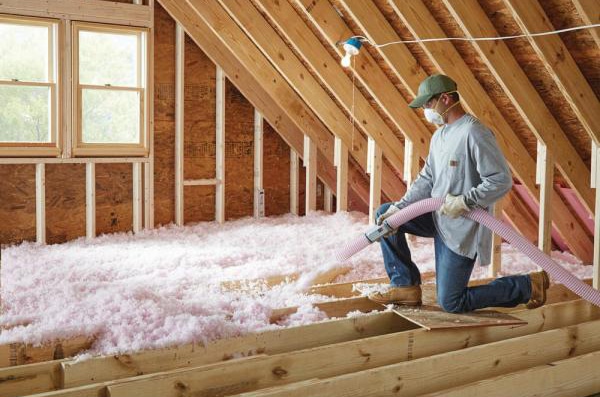How Attic Insulation DFW Can Transform Your Home's Environment Control
How Attic Insulation DFW Can Transform Your Home's Environment Control
Blog Article
Discover the Various Kinds of Attic Insulation and Their One-of-a-kind Advantages for Your Home's Energy Effectiveness

Fiberglass Insulation
Fiberglass insulation is just one of the most commonly used products for attic room insulation due to its superb thermal efficiency and cost-effectiveness. Made up of tiny glass fibers, this material properly catches air, producing a protecting obstacle that helps maintain consistent indoor temperatures. Its high R-value per inch makes it especially reliable at withstanding warm transfer, which is vital for energy conservation in homes.
Installation of fiberglass insulation is reasonably simple, usually available in batts or loose-fill types, fitting different attic configurations. In addition, it is non-combustible and resistant to dampness, decreasing the threat of mold advancement. This longevity contributes to its durability, making fiberglass a viable long-lasting investment for house owners.
Furthermore, fiberglass insulation is frequently manufactured from recycled products, which enhances its eco-friendliness. The material can likewise add to soundproofing, reducing sound transfer between rooms. While it is vital to use protective equipment during installment to stay clear of inflammation from the fibers, the total advantages of fiberglass insulation, consisting of power cost savings and environmental considerations, make it a popular choice for improving attic room efficiency and advertising a comfortable living environment.
Spray Foam Insulation
Spray foam insulation is a highly reliable option for attic room insulation, recognized for its superior air securing and thermal efficiency. This cutting-edge insulation product is made up of a blend of isocyanate and polyol resin, which, when incorporated, increases rapidly to fill up spaces and tooth cavities in the attic area. Its ability to comply with various surface areas guarantees a continual barrier against air leakages, dramatically decreasing warmth loss during colder months and warmth gain throughout warmer seasons.
Among the key advantages of spray foam insulation is its high R-value per inch, which indicates it offers outstanding thermal resistance in a fairly slim application. This is specifically helpful in attic rooms where room is often minimal. Furthermore, spray foam can aid lessen wetness buildup, minimizing the threat of mold and mildew and mildew development, which can be damaging to both the framework and indoor air quality.
While the initial expense of spray foam insulation might be greater than traditional alternatives, its long-lasting energy financial savings, paired with enhanced convenience and improved home value, make it a beneficial financial investment for property owners looking for boosted energy effectiveness. Attic Insulation DFW. Overall, spray foam insulation attracts attention as an effective option for optimizing attic room insulation
Cellulose Insulation

Cellulose insulation is a prominent selection for attic room insulation, mainly composed of recycled paper items treated with fire resistants. This eco-friendly choice is understood for its exceptional thermal performance, effectively lowering heat transfer in both summer season and wintertime months. The thick composition of cellulose enables it to fill voids and gaps in attic room spaces, offering a seamless barrier against air leaks.
One of the considerable advantages of cellulose insulation is its capacity to resist mold and mildew and insects, owing to the fire retardant therapies utilized during manufacturing. Furthermore, it boasts a high R-value per inch, which equates into remarkable power effectiveness. House owners can expect lower heating and air conditioning costs as a result of improved insulation.
Setup is usually achieved through blowing loosened cellulose right into the desired area, permitting a effective and quick procedure. This method additionally minimizes interruption to the existing structure. Cellulose insulation has a fairly reduced ecological influence, as its manufacturing process utilizes recycled materials, adding to sustainable building methods.
Rock Wool Insulation
Amongst the various options for attic room insulation, rock woollen, also referred to as mineral wool, stands out as a result of its excellent thermal and acoustic performance. Made from recycled or all-natural materials, rock wool is developed by melting rock and rotating it right into fibers, leading to a product that supplies exceptional insulation homes.
Among the considerable benefits of rock wool insulation is its high R-value, which indicates its effectiveness in resisting heat flow. This particular not only enhances power performance but also adds to preserving a comfortable indoor temperature level year-round. Additionally, rock woollen is naturally fire-resistant, making it a much safer choice for homes as it can stand up to heats without melting or releasing toxic fumes.
Moreover, rock wool insulation masters soundproofing capabilities, properly reducing noise transmission between areas and from outdoors sources. This makes it an ideal option for home owners looking for a peaceful living setting. Additionally, rock wool is moisture-resistant, helping to protect against mold growth and a knockout post maintaining the structural click now integrity of the attic room. Generally, rock wool insulation gives an extensive remedy for enhancing energy performance, safety and security, and comfort in domestic setups.
Glowing Obstacle Insulation
Radiant obstacle insulation acts as an efficient remedy for decreasing warm transfer in attic rooms, especially in warmer climates. This kind of insulation works by showing convected heat away from living areas, consequently decreasing the amount of heat that gets in a home during heat - Attic Insulation DFW. Generally composed of a very reflective material, such as light weight aluminum foil, glowing barriers are installed in attics, encountering the roofing system, where they can intercept inbound warm from the sunlight
The primary advantage of radiant barrier insulation is its capacity to lower air conditioning costs. By mirroring warm instead of absorbing it, glowing barriers can help keep an extra secure interior temperature level, reducing the work on cooling systems. This effectiveness converts into lower power bills and enhanced comfort for property owners.
Along with power savings, radiant obstacles can also add to enhanced indoor air quality. By reducing warm build-up, they assist reduce moisture levels, which can protect against mold and mildew development and enhance overall air blood circulation. When mounted appropriately, glowing barrier insulation can be an invaluable addition to any kind of energy-efficient home, making directory it a worthwhile consideration for home owners seeking to boost their attic insulation technique.
Final Thought
To conclude, understanding the different sorts of attic insulation-- fiberglass, spray foam, cellulose, rock wool, and glowing obstacles-- allows house owners to make educated choices pertaining to energy efficiency. Each insulation kind presents special benefits, such as premium thermal resistance, wetness monitoring, and audio attenuation. By choosing the suitable insulation product, considerable reductions in energy costs can be accomplished, along with enhancements in indoor comfort. Eventually, the right choice adds to an extra sustainable living environment and advertises general power preservation.

In conclusion, understanding the numerous types of attic room insulation-- fiberglass, spray foam, cellulose, rock woollen, and radiant obstacles-- makes it possible for house owners to make enlightened choices pertaining to power effectiveness.
Report this page